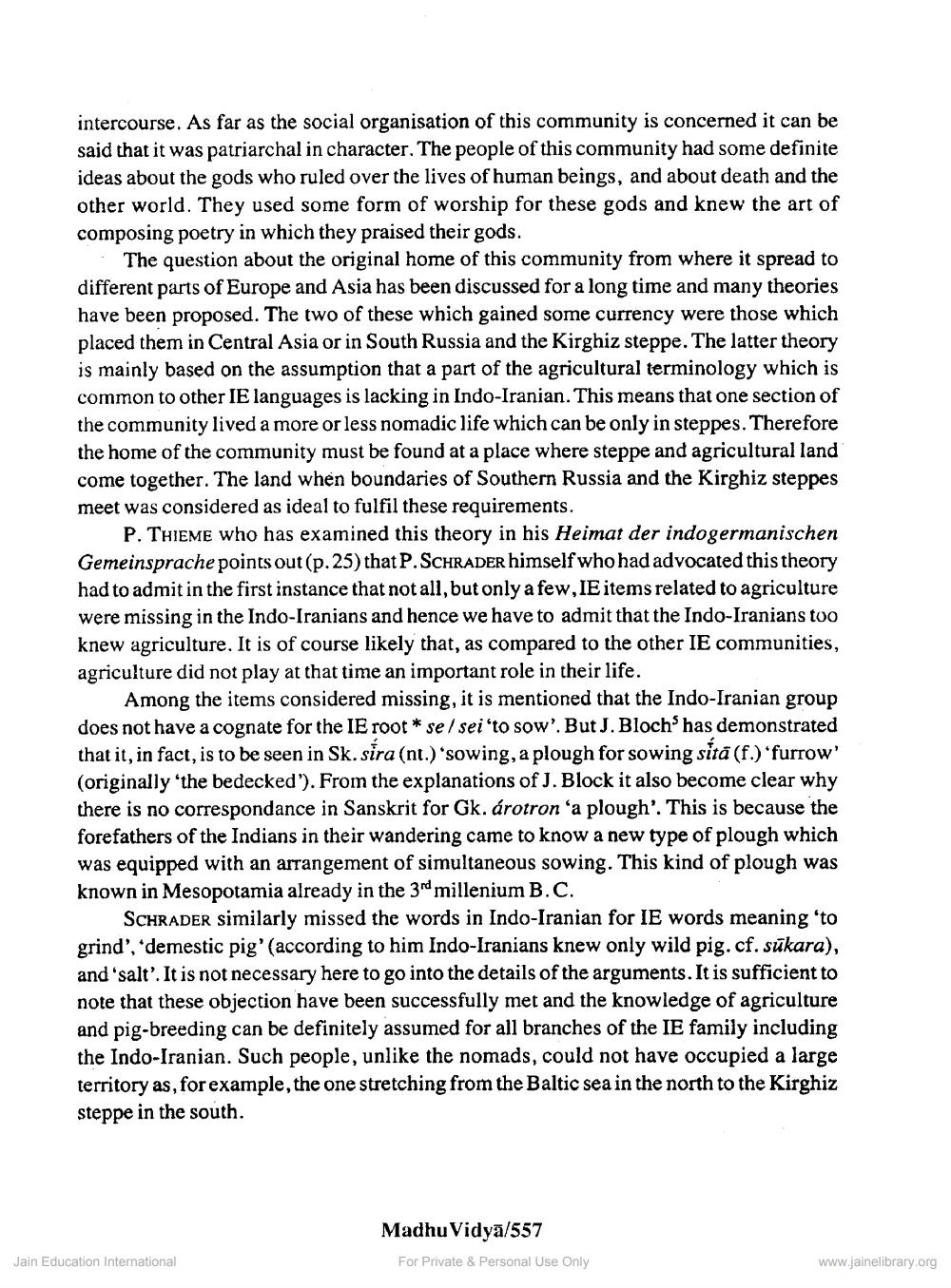________________
intercourse. As far as the social organisation of this community is concerned it can be said that it was patriarchal in character. The people of this community had some definite ideas about the gods who ruled over the lives of human beings, and about death and the other world. They used some form of worship for these gods and knew the art of composing poetry in which they praised their gods.
The question about the original home of this community from where it spread to different parts of Europe and Asia has been discussed for a long time and many theories have been proposed. The two of these which gained some currency were those which placed them in Central Asia or in South Russia and the Kirghiz steppe. The latter theory is mainly based on the assumption that a part of the agricultural terminology which is common to other IE languages is lacking in Indo-Iranian. This means that one section of the community lived a more or less nomadic life which can be only in steppes. Therefore the home of the community must be found at a place where steppe and agricultural land come together. The land when boundaries of Southern Russia and the Kirghiz steppes meet was considered as ideal to fulfil these requirements.
P. THIEME who has examined this theory in his Heimat der indogermanischen Gemeinsprache points out(p.25) that P. SCHRADER himself who had advocated this theory had to admit in the first instance that not all, but only a few, IE items related to agriculture were missing in the Indo-Iranians and hence we have to admit that the Indo-Iranians too knew agriculture. It is of course likely that, as compared to the other IE communities, agriculture did not play at that time an important role in their life.
Among the items considered missing, it is mentioned that the Indo-Iranian group does not have a cognate for the IE root * sel sei'to sow'. But J. Bloch has demonstrated that it, in fact, is to be seen in Sk. sira (nt.) 'sowing, a plough for sowing sita (f.) furrow' (originally the bedecked'). From the explanations of J. Block it also become clear why there is no correspondance in Sanskrit for Gk. árotron'a plough'. This is because the forefathers of the Indians in their wandering came to know a new type of plough which was equipped with an arrangement of simultaneous sowing. This kind of plough was known in Mesopotamia already in the 3rd millenium B.C.
SCHRADER similarly missed the words in Indo-Iranian for IE words meaning 'to grind', 'demestic pig' (according to him Indo-Iranians knew only wild pig.cf. sūkara), and 'salt'. It is not necessary here to go into the details of the arguments. It is sufficient to note that these objection have been successfully met and the knowledge of agriculture and pig-breeding can be definitely assumed for all branches of the IE family including the Indo-Iranian. Such people, unlike the nomads, could not have occupied a large territory as, for example, the one stretching from the Baltic sea in the north to the Kirghiz steppe in the south.
Madhu Vidyā/557
For Private & Personal Use Only
Jain Education International
www.jainelibrary.org




